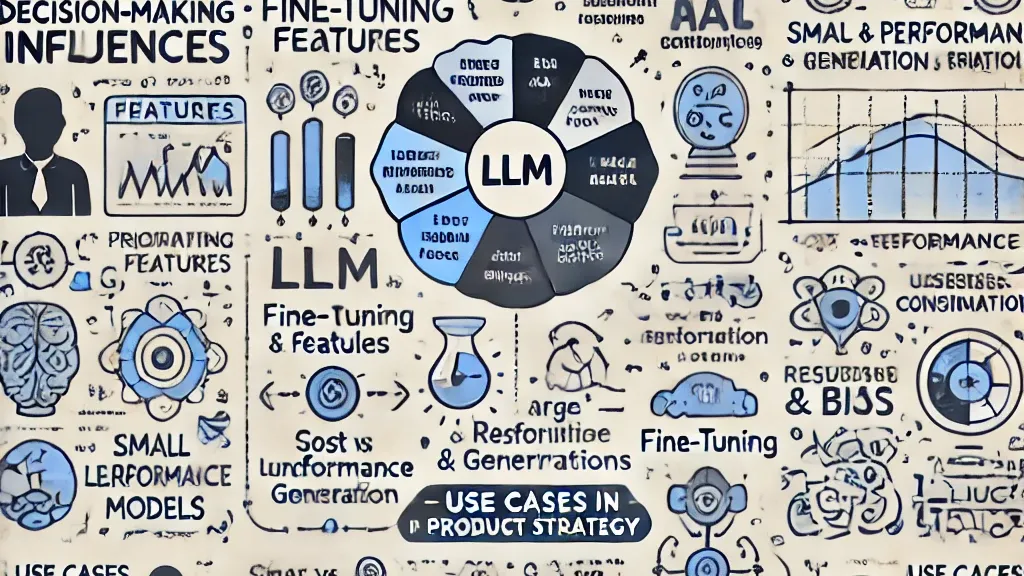
Understanding LLMs as a Product Manager | Part 1 of 3
Rohan Sharma
Product Leader for ML [email protected] | Simplifying and Scaling ML & LLM Products
Large Language Models (LLMs) are everywhere. For us PMs, it's not enough to just know that LLMs are “powerful” or “transformational.” What truly matters is understanding how they work—because that’s what enables us to make better decisions when building products.
Having worked extensively on AI observability, I’ve had first-hand exposure to the inner workings of LLMs—how they process data, generate insights, and where they can go wrong. Through this series, I’ll break down the complexities of LLMs for the product community—without the jargon overload. ??
Lets go!
Tokens: The Raw Ingredients of an LLM
Before an LLM can process text/image/Audio/Video etc, it first chops it up into smaller pieces—called tokens. These aren’t always full words; they can be subwords, characters, or even punctuation, for non-text inputs (like images or audio), tokens can be pixel values or encoded waveforms.
?? Why Should You Care?
Every time you interact with an LLM, you’re charged per token—so tokenization affects cost, speed, and response quality. More tokens = better nuance but also higher costs.
Embedding Vectors: Turning Words into Numbers
Once a sentence is tokenized, each token is transformed into an embedding vector—a fancy way of saying: A mathematical representation that captures the meaning and relationship between words. Think of it like a map, where similar words are closer together. Each embedding has hundreds or even thousands of dimensions, depending on the model. The idea is that embedding dimensions capture different linguistic and semantic properties of a token.
?? After this step, LLMs never work with raw words again—just these embedding vectors.
?? Why Should You Care?
The Transformer Engine: Making Sense of Context
Now that everything’s converted into vectors, LLMs use transformers to process the information.
?? Step 1: Self-Attention Mechanism – The model looks at each word in relation to every other word in the sentence. Example: In "She unlocked the vault with the key," the model figures out that "key" refers to "vault", not "unlocked".
?? Step 2: Feedforward Layers – These refine the meaning further, filtering out noise and strengthening relevant connections.
领英推荐
?? Why Should You Care?
Transformers are why LLMs don’t just predict words randomly—they deeply understand the context. In transformers, attention is computed in each layer. Having more layers can help capture deeper contextual relationships, but the quality of attention comes from the design and implementation rather than just the layer count. While GPT-3 is a deep transformer model, its largest version is typically noted to have 96 layers. So depending on the use case, select the model to ensure you value cost vs attention context
The Real-World Trade-Offs for Product Managers
Now that we know the core mechanics, let’s talk about why this actually matters when building AI products:
?? Scalability vs. Cost:
?? Accuracy vs. Relevance:
?? Deep Understanding of Use Cases Matters:
?? What’s Next?
This is Part 1 of my 3-part series on "Understanding LLMs as a Product Manager"—next, I’ll break down Fine-Tuning vs. RAG: Which One Should You Use?
?? What’s the biggest challenge you’ve faced while working with LLMs? Let’s discuss this in the comments! ??
?? Credits & Inspiration
This post is inspired by my research, customer discussions, and insights from the AI community. A special mention to the 3Blue1Brown, whose incredible visual explanations of transformers and embeddings helped shape my understanding.
AI Product Management Aspirant | Marketing, Project Management & AI Strategy | Skilled in Jira & Agile Frameworks
2 周Helpful insight, Rohan
PMO - Digital ,Robotics and Enabling Technology
3 周Will be interesting to learn Rohan!!
Jumpstart your ideas, talk to me. Product Head, ex founder, VC, Advisor, Payments, Lending, Fintech, D2C. Talk to me about building GTM or MVP.
3 周Curious to see how you break down fine-tuning vs. RAG. Balancing cost and accuracy has always felt like threading a needle—looking forward to your take on it.
Senior Manager, Global Marketing at Dell Technologies | MBA in Marketing and Strategy
3 周Fantastic article Rohan. Coincidentally I also completed a similar course very recently and can't wait for your part 2 and 3 to learn more !